Flavor characteristics of Colombian Rosa Coffee beans introduction to the cultivation of Coffee in San Pedro Manor, Colombia

Professional coffee knowledge exchange more coffee bean information please follow the coffee workshop (Wechat official account cafe_style)
Rose summer coffee is the top pursuit of boutique coffee, and it is the taste of first love that many people miss. Qianjie knows that this may be a bit of an exaggeration, but there is no doubt that Rosa is one of the top coffees in boutique coffee. Among them, Panamanian rose summer is of the best quality and is the most well-known, so that it has always been synonymous with rose summer. But the quality of rose summer in other countries does not mean that it is bad, and there are good rose summers waiting for us to discover, such as this one from Colombia.
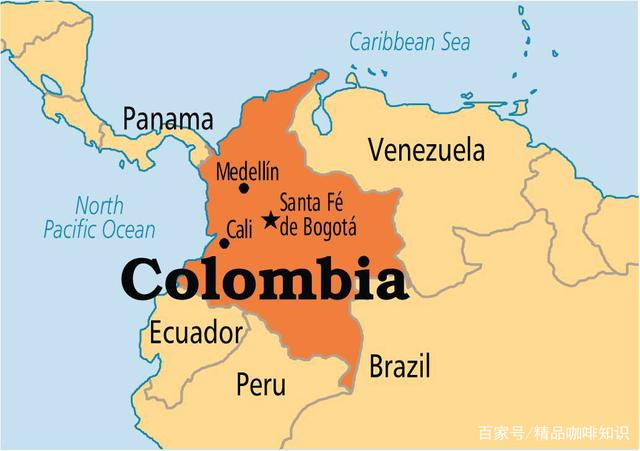
Colombia's Geisha is undoubtedly the brighter coffee item than Panama's Geisha in recent years, not only because of Colombia's good mountains and water, but also because it trampled Panama's most famous emerald estate in an international competition, and won the second place in the SCAA COTY bean contest in 2012. It can be said to be strong.
The Blue Mountain Geisha, produced in the Cauca Valley, Colombia, at an altitude of 1700m above sea level, has aromas of Darjeeling black tea, orange, yellow sweet lemon, sweetness of black sugar and citrus juice, as well as sweet-scented osmanthus and rum. Mild and non-irritating acidity, excellent thick texture, high-grade black tea texture. As the temperature drops, the sour taste softens. The soft sour taste brings obvious sweetness.
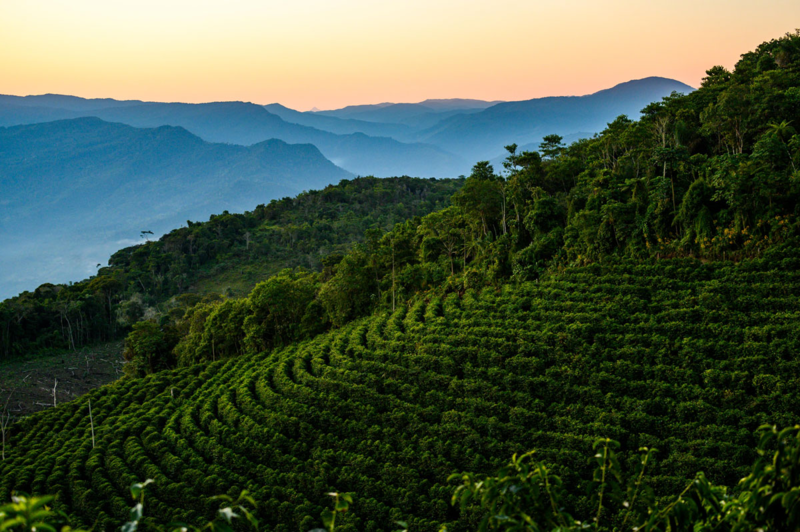
Chateau San Pedro, Colombia
Colombia is the world's third largest exporter of coffee, mainly producing Arabica coffee and the largest exporter of Arabica beans. Colombia is rich in products, especially coffee, flowers, gold and emeralds are known as the "four treasures".
Tolima Tolima
Tolima is adjacent to huila and cauca, which runs through the north-south Andes and Cordillera mountains, and between the two famous mountain systems is the Magdalena River running from south to north.
The name Tolima comes from the earliest people who lived here, "Pijaopeople". In the language of this ancient people, tolima means "snow cover" and "snowed".
The farms in Tolima are generally slightly larger than those in other southern Colombian producing areas, ranging from 10 to 15 hectares. The cooperative approach is also popular here, where farmers send their small batches of fresh coffee and fruit to the cooperative's processing plant. Some farmers will also choose to deal with it on their own, making use of their own small-scale treatment facilities that can handle the harvest of the day.
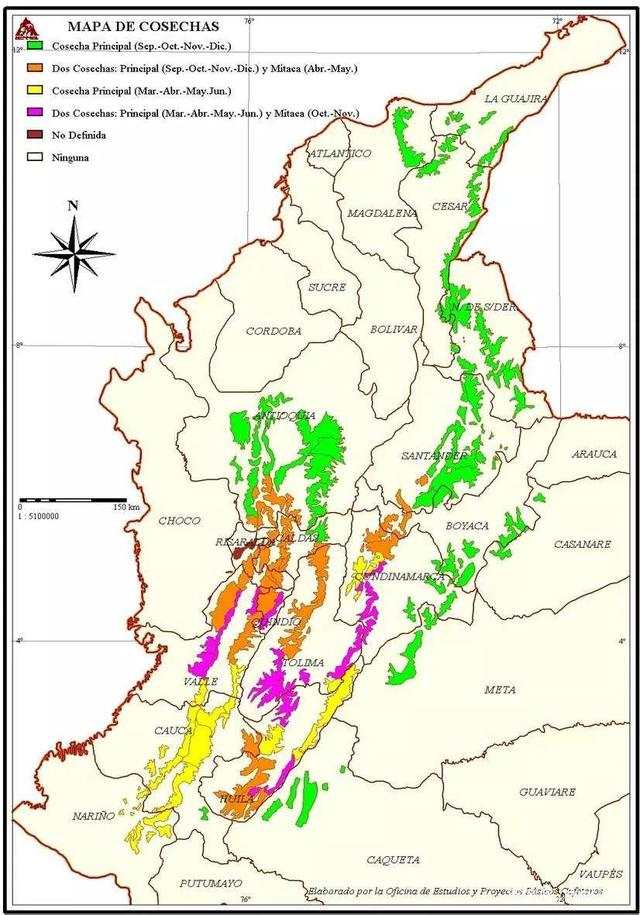
Tolima producing area
Tolima is adjacent to huila and cauca, which runs through the north-south Andes (M. Andes) and the Cordillera Mountains (M. Cordillera), and between the two famous mountain systems is the Magdalena River (R. Magdalena) running from south to north.
Tolima's name comes from the earliest people who lived here, "Pijaopeople". In the language of this ancient people (Pijao word), tolima means "snow cover" and "snowed".
Toly's farm is generally slightly larger than other farms in southern Colombia, about 10-15 hectares. The cooperative approach is also popular here, where farmers send their small batches of fresh coffee and fruit to the cooperative's processing plant. Some farmers will also choose to deal with it on their own, making use of their own small-scale treatment facilities that can handle the harvest of the day.
San Pedro Manor Finca San Pedro
Finca San Pedro is located in the village of veredaLa Marimba, the village where most of the top coffee is grown in the area. His son Alberto is the community leader, working with many of the family's neighbors to improve the quality of coffee throughout the region.
Finca San Pedro's processing method is exemplary, with one shallow slot for removing immature cherries and another for the fermentation of coffee cherries. Coffee cherries are fermented for 20-24 hours, washed for 5-7 rounds after fermentation, and dried on a brand new parabolic drying bed.
For them, the new drying bed is a big improvement-their original drying bed is only 12 square meters, which means there is not enough space to dry all the coffee evenly at the peak of the harvest season. Now, with a new bed of 47 square meters, all the coffee beans can be dried slowly and thoroughly.
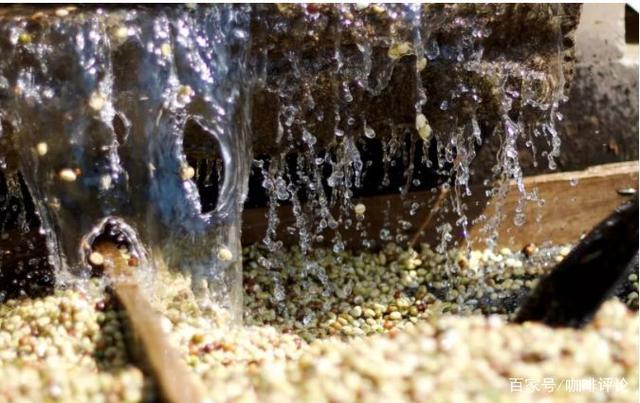
Treatment method
The method of washing is used in this summer.
Screening coffee cherries-removing pulp-fermentation-washing-drying-shelling
Put the selected coffee cherry into the peeling machine and initially remove its skin and pulp; put the coffee beans with residual pectin into water and let them ferment for about 24 hours; after fermentation, wash the coffee beans with parchment in a flow tank to remove their pulp and pectin; dry the coffee beans after cleaning or dry them with the help of a dryer to reduce the moisture content to about 12%. Finally, remove the parchment of raw coffee beans.
/ Raw bean information
Chateau San Pedro, Tolima, Colombia
Country: Colombia
Producing area: Tolima
Altitude: 1860m
Treatment: washing treatment
Grade: SUPREMO
Variety: Rose summer
Raw beans & baking
Rose summer is special in that it has very obvious and clear floral and citrus flavor, very high cleanliness, soft and elegant acidity, long-lasting cotton sweetness, and the taste of high-grade black tea. Floral aromas and intense sweetness of tropical fruits, with unique floral and fruity aromas. So we usually choose shallow baking to give full play to the characteristics of beans.
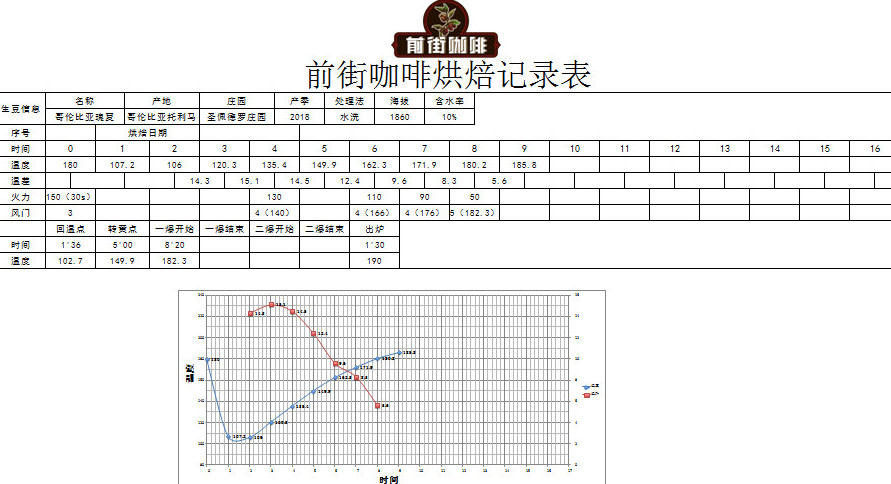
[Chateau San Pedro, Tolima, Colombia] Baking curve
Roaster Yangjia 800N
Enter the pot when the furnace temperature is 180 degrees Celsius, adjust the firepower to 150 after opening the throttle for 30 seconds, the throttle remains unchanged, adjust the firepower to 130 at 140℃, open the throttle to 4; at this time, the bean watch turns yellow, the smell of grass disappears completely, enter the dehydration stage, when the furnace temperature reaches 166℃, adjust the firepower to 110C, the throttle remains the same.
The smell of toasted bread has obviously changed to the smell of coffee, which can be defined as a prelude to an explosion. At this time, it is necessary to listen clearly to the sound of the explosion point, adjust the firepower to 50 degrees Celsius, adjust the throttle to 5 (the firepower should be very careful, and not be so small as to be free of bursting sound), and after the explosion, the development of one cup of bread 39th 30 ", 190 degrees into the pot.
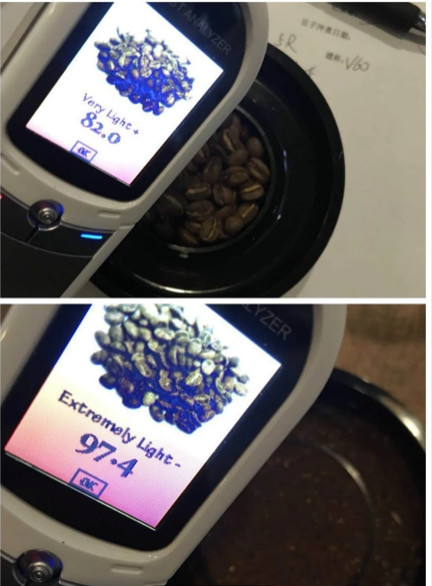
Agtron bean color value is 82 (above), Agtron pink value is 97.4 (bottom image), Roast Delta value is 15.4.
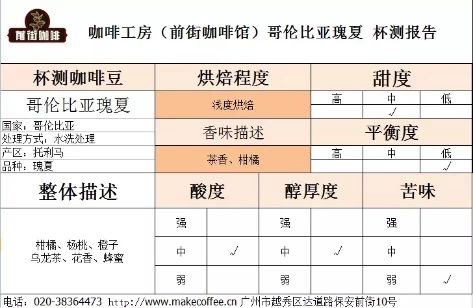
/ cup test
1. The flavor description varies from person to person and will be affected by water temperature and cooking method. This cup test report provides the same cooking utensils and parameters, according to the description defined by the flavor wheel, in order to provide reference.
two。 The content will be revised in time according to the new information, and the latest update shall prevail.
[Chateau San Pedro, Tolima, Colombia, Rose Summer]
Parameters: HARIO V60 ℃ 90 ℃ / 1:15/VARIO 50 (57% pass rate of Chinese standard No. 20 screen)
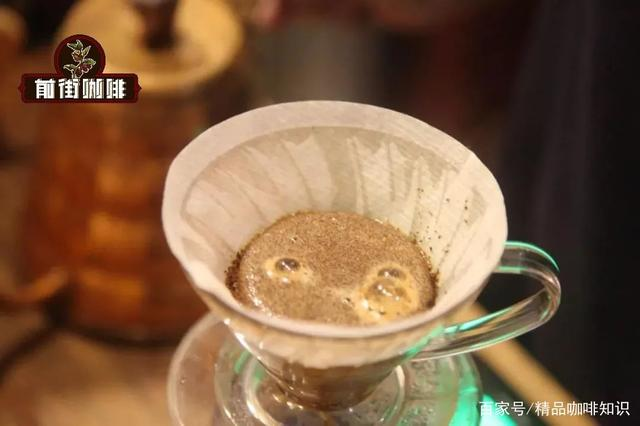
/ Cooking technique: segmented extraction
Technique: steam 30 grams of water for 30 seconds, then inject water to 124 grams, wait for the underwater drop to see the powder bed, then inject to 228 grams, see the powder bed to remove the filter cup, the extraction time is 1: 58 ".
Flavor: you can smell the sour aroma of citrus and the fragrance of green tea when it is hot, sucrose and licorice are obvious when it is hot, with a little sour tone of lemon in the middle, and the aftertaste of oolong tea is a bit like a cup of lemon tea; the flavor of citrus at the end is obvious, honey and sucrose are long-lasting, with a feeling of honey green tea.
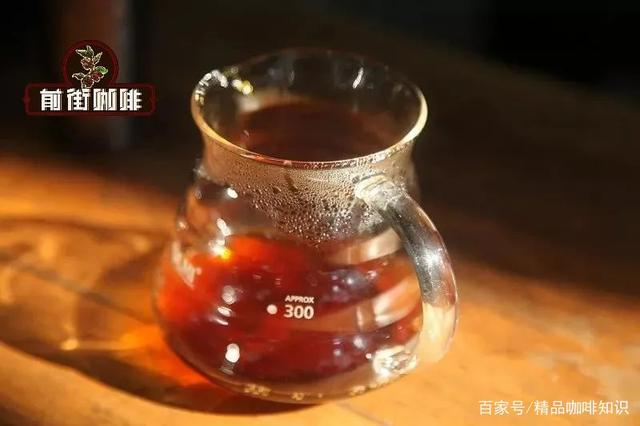
END
Important Notice :
前街咖啡 FrontStreet Coffee has moved to new addredd:
FrontStreet Coffee Address: 315,Donghua East Road,GuangZhou
Tel:020 38364473
- Prev
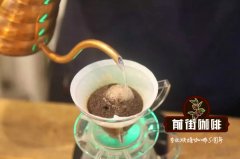
Guatemala's warmest coffee region San Marco coffee region Introduction Guatemala coffee flavor
Professional coffee knowledge exchange More coffee bean information Please pay attention to coffee workshop (Weixin Official Accounts cafe_style) As we all know, Guatemala is mainly divided into eight production areas. More common in China, such as: picotenango, New Oriental, Antigua and Coban In ancient times, violent volcanic eruptions created the terrain of Guatemala mountains, plateaus and abundant water resources, namely,
- Next
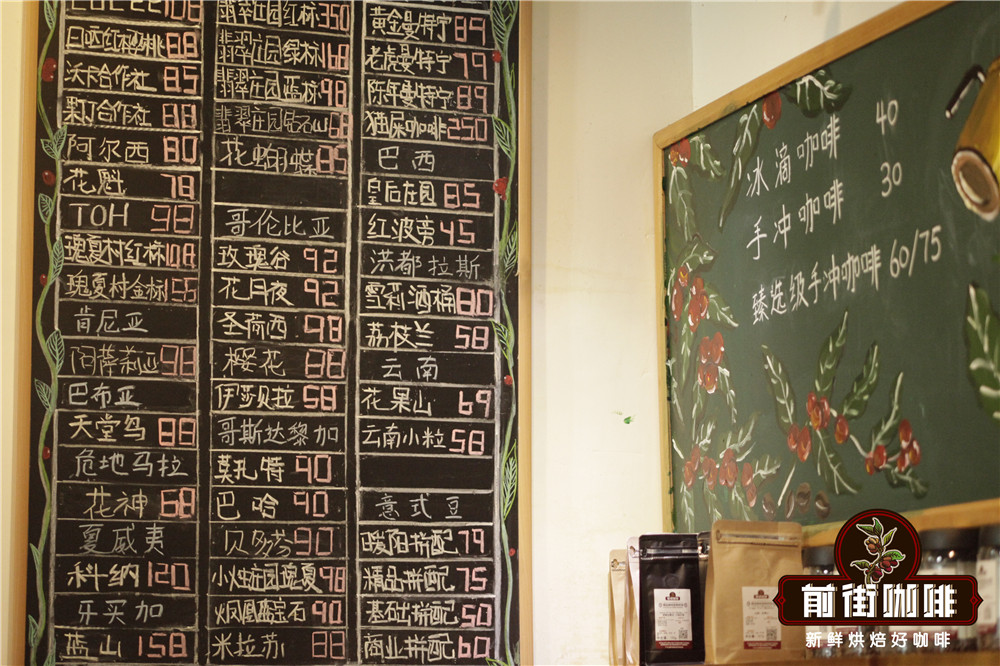
What is the jadeite manor in the rosy summer coffee bean producing area? distinguishing the flavor grade of the red standard, green standard and blue standard of the rose summer
Rosa coffee raw beans have a very beautiful blue-green, jade-like warm texture, smell fresh grass, peach, berry flavor and oolong tea unique milk sweetness that most coffee beans do not have. It seems that aroma and taste of this kind of things need to be combined with association, but the light smell of tea is obvious to us.
Related
- Detailed explanation of Jadeite planting Land in Panamanian Jadeite Manor introduction to the grading system of Jadeite competitive bidding, Red bid, Green bid and Rose Summer
- Story of Coffee planting in Brenka region of Costa Rica Stonehenge Manor anaerobic heavy honey treatment of flavor mouth
- What's on the barrel of Blue Mountain Coffee beans?
- Can American coffee also pull flowers? How to use hot American style to pull out a good-looking pattern?
- Can you make a cold extract with coffee beans? What is the right proportion for cold-extracted coffee formula?
- Indonesian PWN Gold Mandrine Coffee Origin Features Flavor How to Chong? Mandolin coffee is American.
- A brief introduction to the flavor characteristics of Brazilian yellow bourbon coffee beans
- What is the effect of different water quality on the flavor of cold-extracted coffee? What kind of water is best for brewing coffee?
- Why do you think of Rose Summer whenever you mention Panamanian coffee?
- Introduction to the characteristics of authentic blue mountain coffee bean producing areas? What is the CIB Coffee Authority in Jamaica?

